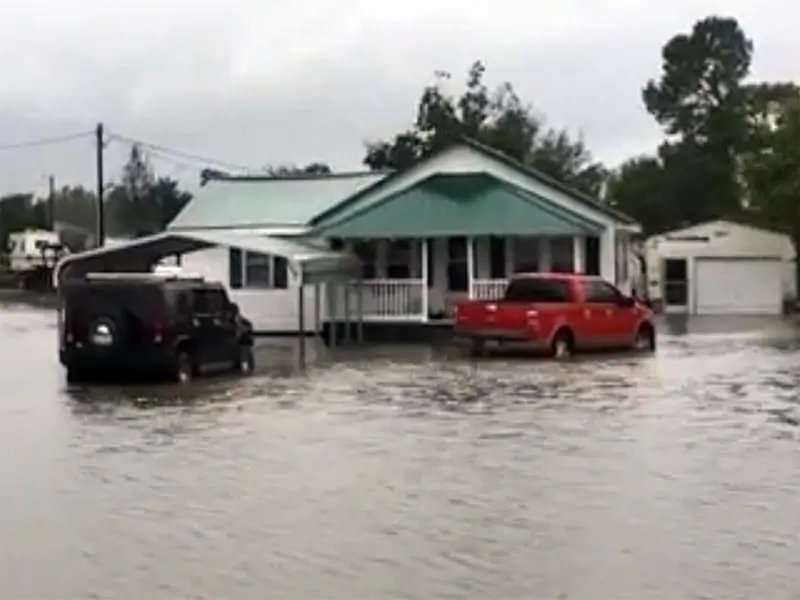Florence's lingering threat: mold

(HealthDay)—In the aftermath of Hurricane Florence, residents of the Carolinas are facing a new health threat: mold.
Mold-related illnesses are a serious concern following severe flooding in North and South Carolina, say experts from the University of Connecticut School of Medicine.
"Where there's dampness and water, there's mold," said Paula Schenck, of the division of occupational and environmental medicine.
"Mold is an indicator of a whole soup of biological material. Unhealthy exposure to these bioaerosols is very possible after a flood from a hurricane and especially during cleanup efforts 24 to 48 hours after the storm," she said in a university news release.
Exposure to mold primarily affects the lungs and the skin, Schenck said. How you react to mold depends on the severity of your exposure. Some people may be more susceptible to mold-related illnesses than others, including children and those with a weakened immune system, asthma or another chronic illness.
Warning signs of mold-related health issues include:
- Nasal congestion and sneezing.
- Hoarse voice and throat irritation.
- Cough, wheezing, shortness of breath or chest tightness.
- Flareup of asthma symptoms.
- Respiratory symptoms.
- Extreme tiredness.
These symptoms may not develop right away, Schenck noted. She advised doctors to be extra vigilant about educating their patients about mold risk following a storm or natural disaster.
During a post-storm cleanup, the UConn experts advised the following:
- Assume any areas exposed to water or flooding for more than 24 hours have mold even if it's not apparent.
- While cleaning mold, use an "N95" respirator that has bands to hold the mask close to the face. Dust and surgical masks will not protect against mold and mold spores. People at high risk for mold-related illnesses should not attempt to personally clean up following a flood. If water damage covers more than 100-square-feet, seek professional help with the cleanup.
- Wear protective clothing. Cover the skin on the arms, hands, legs and feet while cleaning mold. Use long rubber gloves that extend to the middle of the forearm.
- Wear unvented goggles during mold cleanup to protect the eyes.
- Clean hard surfaces with soapy water. Avoid using bleach or other "fungicides" unless there is contamination from other flooded materials such as sewage. These harsh chemicals aren't more effective than soapy water and could cause or worsen lung irritation.
- Don't attempt to clean soft materials and porous surfaces like fabrics and wall board. Throw away these items.
More information: The U.S. Environmental Protection Agency offers more on hurricane safety and preparedness.
Copyright © 2018 HealthDay. All rights reserved.
















